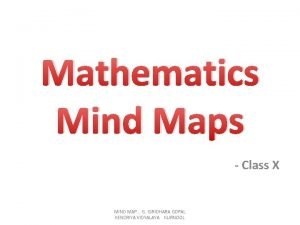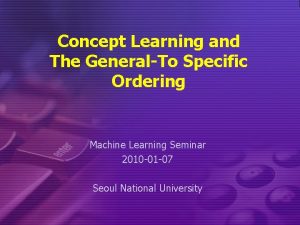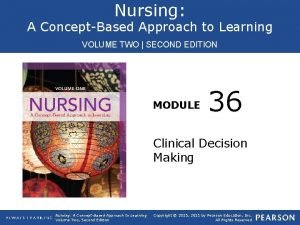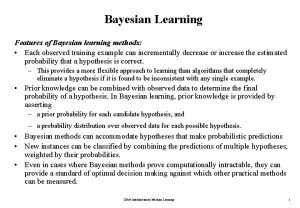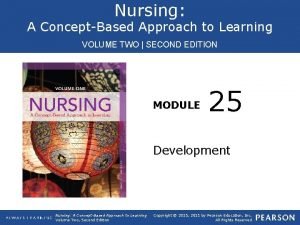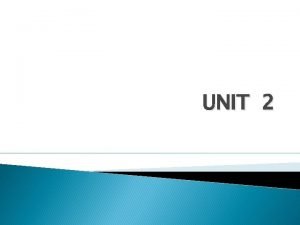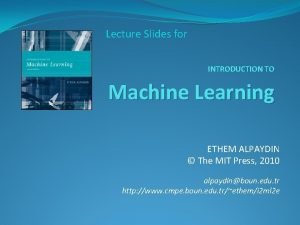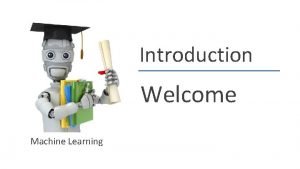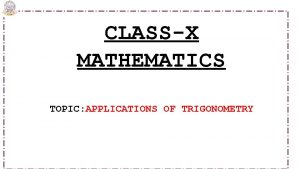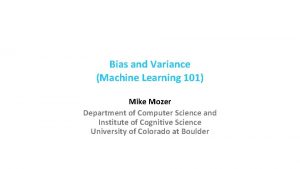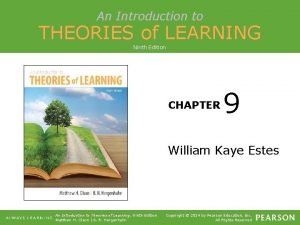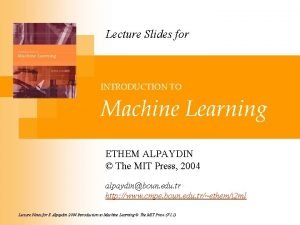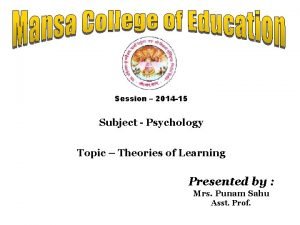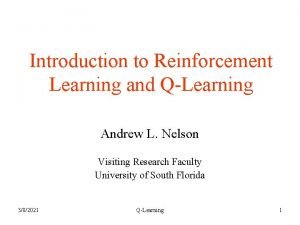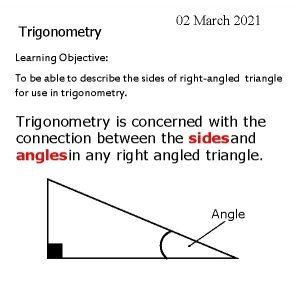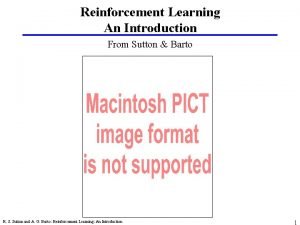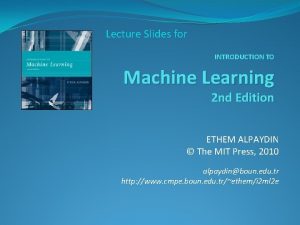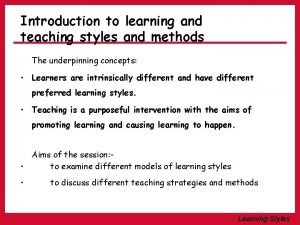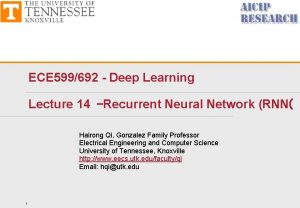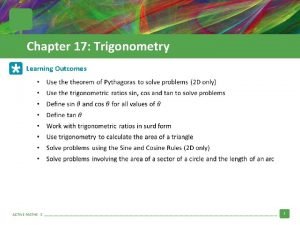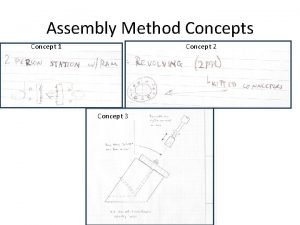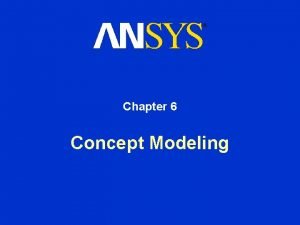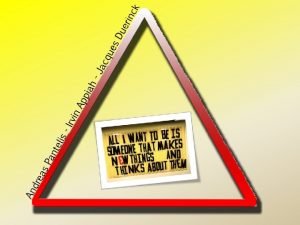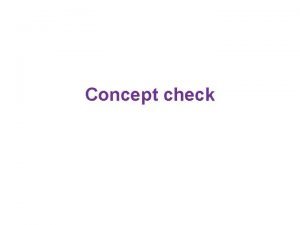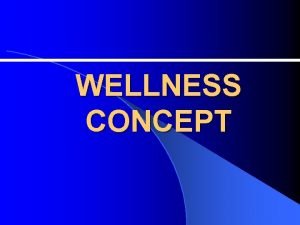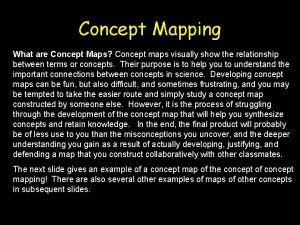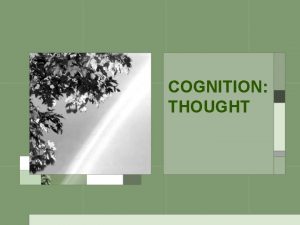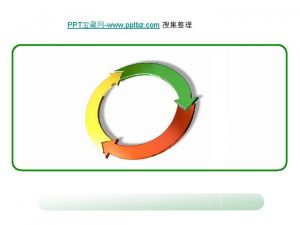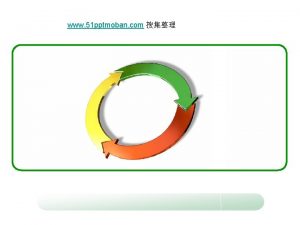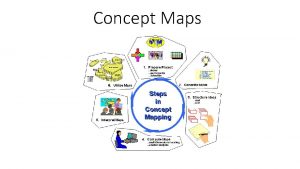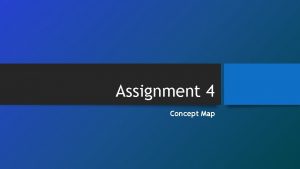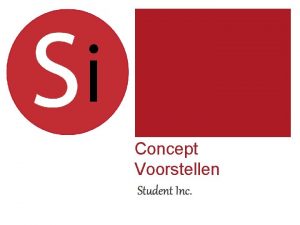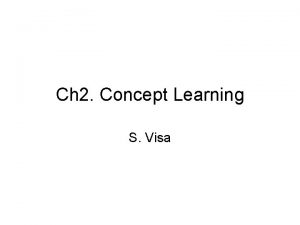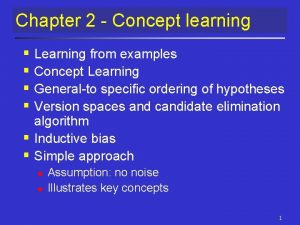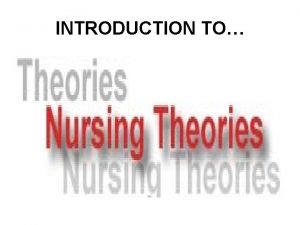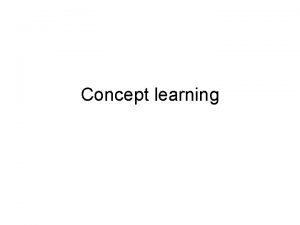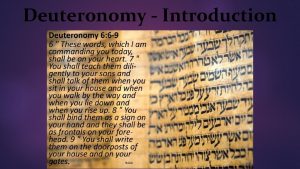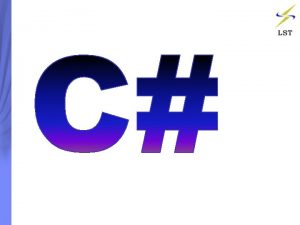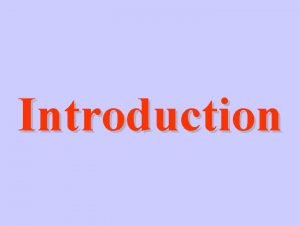2 Concept Learning 2 1 Introduction Concept Learning































- Slides: 31

2. Concept Learning 2. 1 Introduction Concept Learning: Inferring a boolean-valued function from training examples of its inputs and outputs 1 er. Escela Red Pro. TIC - Tandil, 18 -28 de Abril, 2006

2. Concept Learning 2. 2 A Concept Learning Task: “Days in which Aldo enjoys his favorite water sport” 1 er. Escela Red Pro. TIC - Tandil, 18 -28 de Abril, 2006

2. Concept Learning • Hypothesis Representation – Simple representation: Conjunction of constraints on the 6 instance attributes • indicate by a “? ” that any value is acceptable • specify a single required value for the attribute • indicate by a “ ” that no value is acceptable Example: h = (? , Cold, High, ? , ? ) indicates that Aldo enjoys his favorite sport on cold days with high humidity (independent of the other attributes) 1 er. Escela Red Pro. TIC - Tandil, 18 -28 de Abril, 2006

2. Concept Learning – h(x)=1 if example x satisfies all the constraints h(x)=0 otherwise – Most general hypothesis: – Most specific hypothesis: (? , ? , ? , ? ) ( , , , ) 1 er. Escela Red Pro. TIC - Tandil, 18 -28 de Abril, 2006

2. Concept Learning • Notation – – – Set of instances X Target concept c : X {0, 1} (Enjoy. Sport) Training examples {x , c(x)} Data set D X Set of possible hypotheses H h : X {0, 1} Goal: Find h / h(x)=c(x) 1 er. Escela Red Pro. TIC - Tandil, 18 -28 de Abril, 2006

2. Concept Learning • Inductive Learning Hypothesis Any hypothesis h found to approximate the target function c well over a sufficiently large set D of training examples x, will also approximate the target function well over other unobserved examples in X 1 er. Escela Red Pro. TIC - Tandil, 18 -28 de Abril, 2006

2. Concept Learning “We have experience of past futures, but not of futures, and the question is: Will futures resemble past futures? ” Bertrand Russell, "On Induction" 1 er. Escela Red Pro. TIC - Tandil, 18 -28 de Abril, 2006

2. Concept Learning 2. 3 Concept Learning as Search – Distinct instances in X : 3. 2. 2. 2 = 96 – Distinct hypotheses • syntactically • semantically 5. 4. 4. 4 = 5120 1 + (4. 3. 3. 3) = 973 1 er. Escela Red Pro. TIC - Tandil, 18 -28 de Abril, 2006

2. Concept Learning • General-to-Specific Ordering of hypotheses h 1=(sunny, ? , Strong, ? ) h 2=(Sunny, ? , ? , ? ) Definition: h 2 is more_general_than_or_equal_to h 1 (written h 2 g h 1) if and only if ( x X) [ h 1(x)=1 h 2(x)=1] g defines a partial order over the hypotheses space for any concept learning problem 1 er. Escela Red Pro. TIC - Tandil, 18 -28 de Abril, 2006

2. Concept Learning 1 er. Escela Red Pro. TIC - Tandil, 18 -28 de Abril, 2006

2. Concept Learning 2. 4 Finding a Maximally Specific Hypothesis – Find-S Algorithm h 1 ( , , , ) h 2 (Sunny, Warm, Normal, Strong, Warm, Same) h 3 (Sunny, Warm, ? , Strong, Warm, Same) h 4 (Sunny, Warm, ? , Strong, ? ) 1 er. Escela Red Pro. TIC - Tandil, 18 -28 de Abril, 2006

2. Concept Learning 1 er. Escela Red Pro. TIC - Tandil, 18 -28 de Abril, 2006

2. Concept Learning • Questions left unanswered: – – Has the learner converged to the correct concept? Why prefer the most specific hypothesis? Are the training examples consistent? What is there are several maximally specific hypotheses? 1 er. Escela Red Pro. TIC - Tandil, 18 -28 de Abril, 2006

2. Concept Learning 2. 5 Version Spaces and the Candidate-Elimination Algorithm – The Candidate-Elimination Algorithm outputs a description of the set of all hypotheses consistent with the training examples – Representation • Consistent hypotheses Consistent(h, D) ( {x, c(x)} D) h(x) = c(x) 1 er. Escela Red Pro. TIC - Tandil, 18 -28 de Abril, 2006

2. Concept Learning – Version Space VSH, D {h H | Consistent(h, D)} – The List-Then-Eliminate Algorithm • Initialize the version space to H • Eliminate any hypothesis inconsistent with any training example the version space shrinks to the set of hypothesis consistent with the data 1 er. Escela Red Pro. TIC - Tandil, 18 -28 de Abril, 2006

2. Concept Learning • Compact Representation for Version Spaces – General Boundary G(H, D): Set of maximally general members of H consistent with D – Specific Boundary S(H, D): set of minimally general (i. e. , maximally specific) members of H consistent with D 1 er. Escela Red Pro. TIC - Tandil, 18 -28 de Abril, 2006

2. Concept Learning 1 er. Escela Red Pro. TIC - Tandil, 18 -28 de Abril, 2006

2. Concept Learning • Theorem: Version Space Representation – For all X, H, c and D such that S and G are well defined, VSH, D {h H | ( s S) ( g G) (g g h g s )} 1 er. Escela Red Pro. TIC - Tandil, 18 -28 de Abril, 2006

2. Concept Learning • Candidate-Elimination Learning Algorithm 1 er. Escela Red Pro. TIC - Tandil, 18 -28 de Abril, 2006

2. Concept Learning 1 er. Escela Red Pro. TIC - Tandil, 18 -28 de Abril, 2006

2. Concept Learning 1 er. Escela Red Pro. TIC - Tandil, 18 -28 de Abril, 2006

2. Concept Learning 1 er. Escela Red Pro. TIC - Tandil, 18 -28 de Abril, 2006

2. Concept Learning 1 er. Escela Red Pro. TIC - Tandil, 18 -28 de Abril, 2006

2. Concept Learning • Remarks – Will the Candidate-Elimination converge to the correct hypothesis? – What training example should the learner request next? – How can partially learned concepts be used? 1 er. Escela Red Pro. TIC - Tandil, 18 -28 de Abril, 2006

2. Concept Learning A=yes B=no C=1/2 yes - 1/2 no D=1/3 yes - 2/3 no 1 er. Escela Red Pro. TIC - Tandil, 18 -28 de Abril, 2006

2. Concept Learning 2. 7 Inductive Bias Can a hypothesis space that includes every possible hypothesis be used ? – The hypothesis space previously considered for the Enjoy. Sport task is biased. For instance, it does not include disjunctive hypothesis like: Sky=Sunny or Sky=cloudy 1 er. Escela Red Pro. TIC - Tandil, 18 -28 de Abril, 2006

2. Concept Learning An unbiased H must contain the power set of X Power. Set (X) = the set of all subsets of X |Power Set (X)| = 2|X | (= 296 ~1028 for Enjoy. Sport) • Unbiased Learning of Enjoy. Sport H =Power Set (X) 1 er. Escela Red Pro. TIC - Tandil, 18 -28 de Abril, 2006

2. Concept Learning For example, “Sky=Sunny or Sky=Cloudy” H : (Sunny, ? , ? , ? ) (Cloudy, ? , ? , ? ) Suppose x 1 , x 2 , x 3 are positive examples and x 4 , x 5 negative examples S: {(x 1 x 2 x 3)} G: { (x 4 x 5)} In order to converge to a single, final target concept, every instance in X has to be presented! 1 er. Escela Red Pro. TIC - Tandil, 18 -28 de Abril, 2006

2. Concept Learning – Voting? Each unobserved instance will be classified positive by exactly half the hypotheses in the version space and negative by the other half !! • The Futility of Bias-Free Learning A learner that makes no a priori assumptions regarding the target concept has no rational basis for classifying unseen instances 1 er. Escela Red Pro. TIC - Tandil, 18 -28 de Abril, 2006

2. Concept Learning Notation (Inductively inferred from): (Dc xi) L(xi, Dc) Definition Inductive Bias B: ( xi X) [(B Dc xi) L(xi, Dc)] Inductive bias of the Candidate-Elimination algorithm: The target concept c is contained in the hypothesis space H 1 er. Escela Red Pro. TIC - Tandil, 18 -28 de Abril, 2006

2. Concept Learning 1 er. Escela Red Pro. TIC - Tandil, 18 -28 de Abril, 2006
 Concept learning task in machine learning
Concept learning task in machine learning Cuadro comparativo de e-learning
Cuadro comparativo de e-learning How do you describe your real self
How do you describe your real self Perbedaan pemasaran dan penjualan
Perbedaan pemasaran dan penjualan Modern concept of pediatric nursing
Modern concept of pediatric nursing Modern concept of child care ppt
Modern concept of child care ppt Mind map trigonometri kelas 10
Mind map trigonometri kelas 10 Essay structure
Essay structure Explain general to specific ordering of hypothesis
Explain general to specific ordering of hypothesis Nursing a concept based approach to learning volume 2
Nursing a concept based approach to learning volume 2 Features of bayesian learning methods
Features of bayesian learning methods Nursing a concept based approach to learning
Nursing a concept based approach to learning Nursing a concept based approach to learning
Nursing a concept based approach to learning Concept of learning ppt
Concept of learning ppt What is learning without burden
What is learning without burden Introduction to machine learning ethem alpaydin
Introduction to machine learning ethem alpaydin Andrew ng introduction to machine learning
Andrew ng introduction to machine learning Andrew ng intro machine learning
Andrew ng intro machine learning Application of trigonometry in real life pdf
Application of trigonometry in real life pdf Mike mozer
Mike mozer An introduction to theories of learning
An introduction to theories of learning Machine learning ethem
Machine learning ethem Cmu machine learning
Cmu machine learning Pavlov theory of learning
Pavlov theory of learning Introduction to q learning
Introduction to q learning Learning objectives of trigonometry
Learning objectives of trigonometry Sutton and barto reinforcement learning
Sutton and barto reinforcement learning Introduction to machine learning slides
Introduction to machine learning slides Learning styles introduction
Learning styles introduction Azure data mining
Azure data mining Lstm lecture
Lstm lecture Learning outcome
Learning outcome






